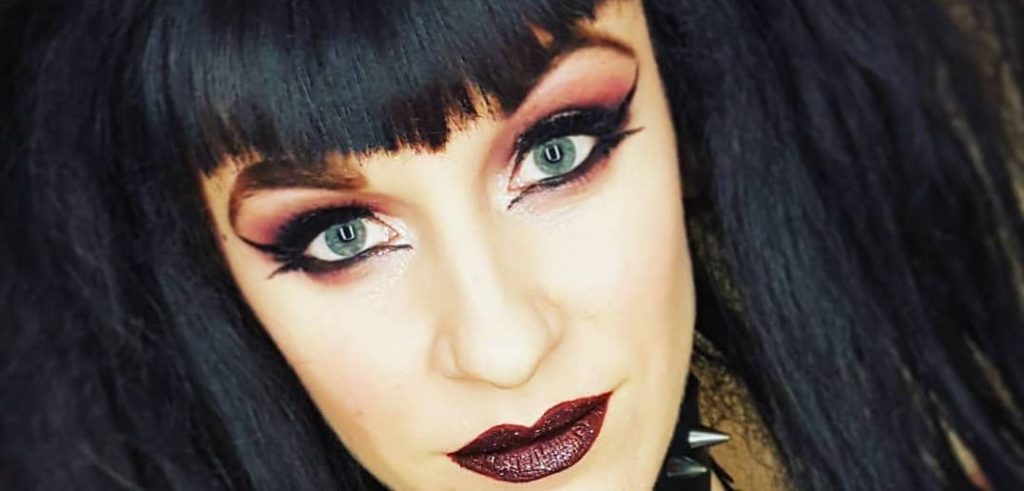
I’m passionate about the Goth scene. I love the music, clothing, dancing, and community. In this post I’ll shed some light on this part of my life by answering some frequently asked questions I’ve encountered over the past two decades.
I’ve been hooked on the “alternative” side of life since my first visit to a alternative club in Manchester and pilgrimage to the Whitby Goth Weekend festival back in the early 2000s. I am also one of the few “Doctors” of Goth, having completed my PhD studies on Goth cultures in the UK, Japan, and the USA several years ago. As a result, I’m asked a lot of questions and wanted to take this opportunity to answer them, but in a more pleasant and informal way than in my Viva exam or at a conference, lol!
As a disclaimer, I’m writing this article from a personal perspective and not attempting to represent everyone’s experience of Goth. So instead of producing a Wikipedia history-of-Goth type entry, this is an account purposefully focussed on my personal experiences and take on things. Hopefully any fellow Goths reading will identify with some of the questions and answers, although I’m sure you will have different stories and different ways of explaining- do get in touch if you’d like to share! Let’s get cracking…
To kick off, I’d like to share this example of a frequent Monday morning coffee break conversation I have at work:
What did you get up to at the weekend?
Me: I went to a Goth club
*confused face* I didn’t know you were into golf?!
Me: Sigh…
Yep, this is the most common start to a conversation on this topic- Goth gets misheard as golf! No, I’m not into the sport of golf. Stop imagining me wearing Argyle socks and silly pants and let’s carry on…
The conversations then often go on as follows:
Oh, not golf…. What’s this “Goth” thing then?
So, here’s my elevator pitch definition for those completely new to this idea: Goth originated as a music and style scene which developed from punk and post-punk styles of music and fashion of the late 1970s. Goth incorporates some common counter-culture themes like a creative DIY ethos and a tendency to identify as “other” to a perceived “mainstream”, but specifically brings in a romantic, dark, and sometimes a future-looking or post-apocalyptic sensibility.
Goth, unsurprisingly, draws on Gothic themes you’ll find in literature and film. There is a focus on what can be generically termed the “darker side of life”; the eerie and mysterious, and many of us do love a bit of melodrama! Style-wise, a dark sense of beauty is celebrated, with boots, corsets, heavy eyeliner, and black clothing being very popular for Goths of all genders. More on all of this later…
So Goth music- that’s heavy metal and headbanging, like Marilyn Manson and Cradle of Filth, right?
This is a very common misconception! While you may hear Marilyn Manson (not so much Cradle of Filth tbh) played at a Goth club, this is technically different, and it’s important to note that Goth is a genre of music in it’s own right with many sub-genres within it. Yep, things can get pretty complicated! You’re also welcome to headbang anytime if you really want to, but we even have our own style of dancing (more on this next time).
Proto-Gothic Rock music can be traced back to bands like the Doors in the late 1960s, but by the 1970s, music journalists were using the term “Gothic” ever more commonly to descibe the sounds of Post-Punk acts like Siouxsie and the Banshees (who hung out with rebellious punk legends, the Sex Pistols), and other unusual bands such as The Damned, with singer David Vanian famously dressed as a vampire, and the gloriously gloomy, Joy Division.
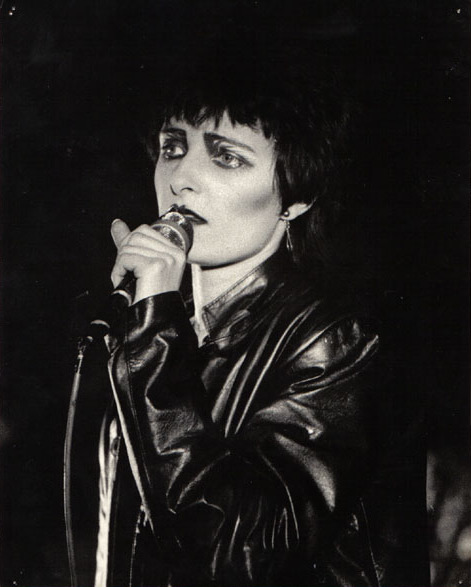
Legend and inspiration, Siouxsie Sioux in 1980 (source: Wikimedia commons)
The first true “Goth” single however, is usually attributed to Bauhaus’s 1979 single, Bela Lugosi’s Dead, and it’s easy to see why! This song is “Goth” in so many ways: the lyrics are unashamedly filled with Gothic tropes (e.g. “The bats have left the bell tower, The victims have been bled”), plus Bela Lugosi was an actor famed for depicting Count Dracula on the stage and in the Tod Browning 1931 film adaptation. The sound of the music is also distinct: the song is 9 minutes of echoing, atmospheric sounds, transporting listeners to a vast, deserted landscape. How Goth is that!? (the answer is: very!) Even the cover art of the single is a still from early Gothic horror film The Cabinet of Dr. Caligari– I have a framed copy of the record on my wall #clichemuch.
Goth music has come a long way, absorbing other cultural influences over time
Fast forward to 2020, and Goth music has come a long way, absorbing other cultural influences over time. For example, dance music boomed in the 1990s mainstream and infused Goth music with an electronic element and new sub-genres were born. At a contemporary Goth club you’ll likely hear a variety of styles: a fusing of metal and electonic music sounding a bit like the inside of a very cool factory (Industrial), up-tempo electronic music with synths (Synth Wave), electronic music with sung lyrics (Future Pop, EBM), heavy layered electronic music (Noise), atmospheric sounds taking inspiration from the occult (Witch House), and even music inspired by retro video games (Chiptune).
What is Goth clothing style?
Just like sub-genres of Goth music, there are many different clothing styles within Goth. Before our own clothing brands sprung up, early Goths had to get crafty: an outfit could be put together from PVC and fishnet items bought from sex shops, pieces fashioned from customised conventional clothing items, and accessorised with unconventional materials like chains and safety pins. There is still influence from these roots, with elements such as corsets, PVC, knee and thigh high boots, harness, spikes, and latex all remaining popular, but nowadays we have a lot more sartorial choice.
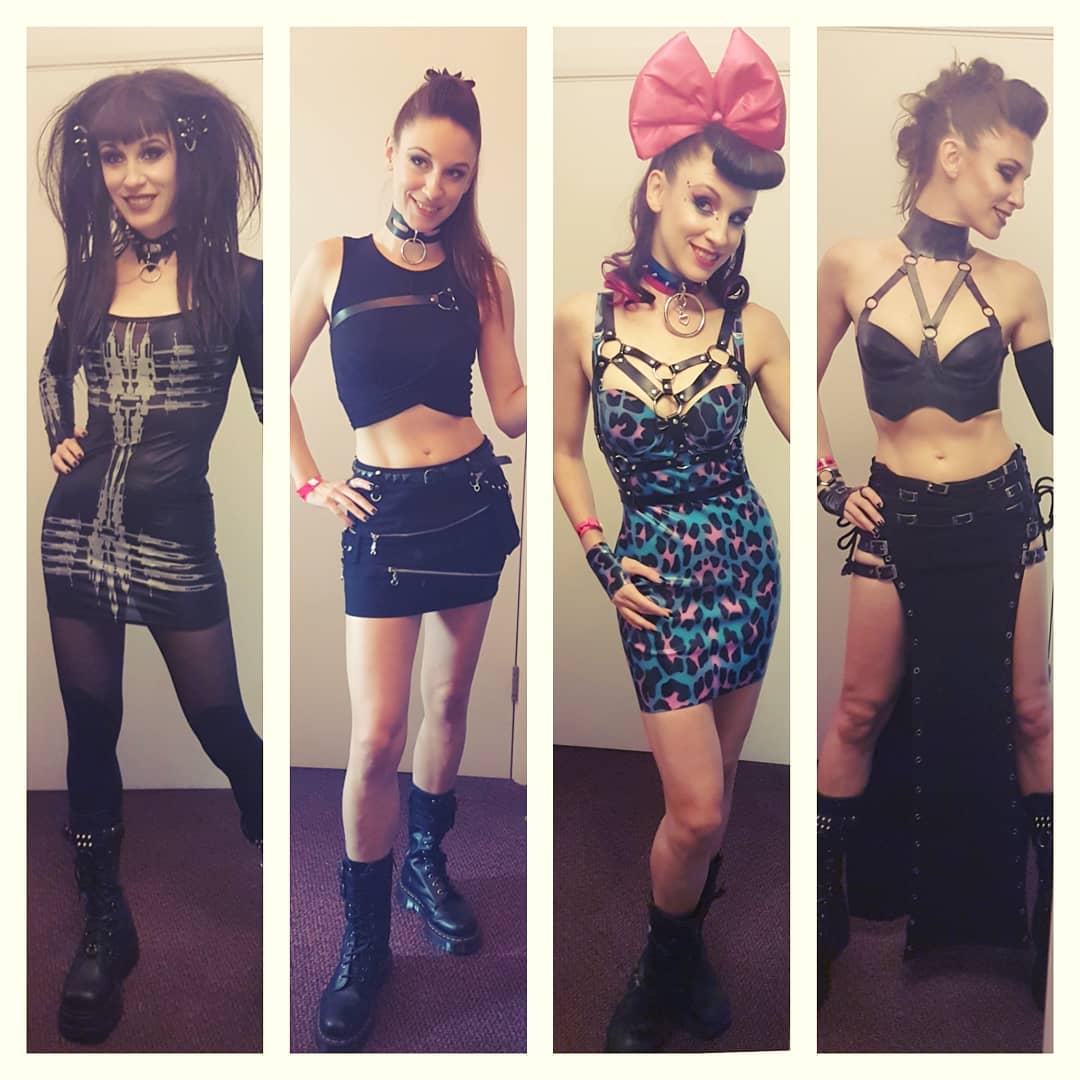
Some of the many sub-styles I’ve worn over a 3-day festival in 2019!
Some Goths are inspired by imagery from the Victorian age- we love a good frilly shirted, sexy Vampire and a tightly corseted lady in mourning, dripping in velvet and lace. Those preferring to look to the future, sometimes called “Cybergoths”, might embrace a flash of neon colour with their black in a Tron-like homage.
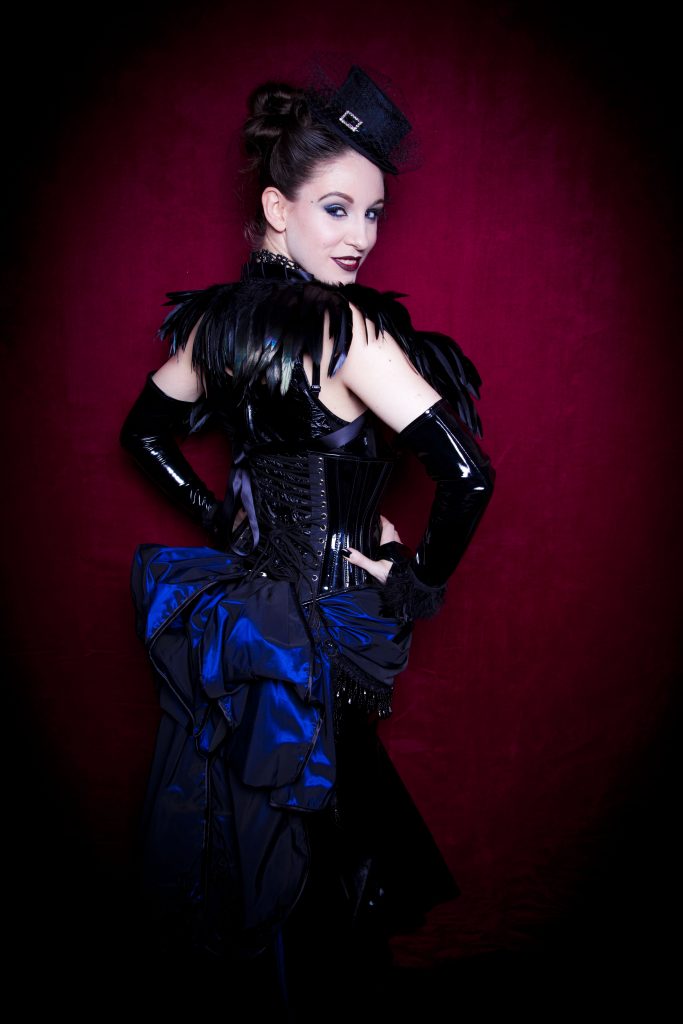
Check out my bustle! A dramatic look for Whitby Goth Weekend festival back in 2012
I often like to play with a dark rockabilly 1940s/50s aesthetic and wear my victory roll hair style, usually seen at a Lindy Hop event, to the Goth club, with a latex pencil skirt and corset. Others opt for a more casual style with Black cargo trousers, a band T-shirt, and army boots- perfect for dancing all night. There are many other styles and the choice is yours!
Why do people become Goths?
There are probably as many answers to this as there are self-identifying Goths!
OK then, why did you get into Goth?
I’ll continue to be difficult and start by telling you why I personally didn’t get into the scene: I wasn’t a cool kid who knew about the latest underground music (the first CD I ever bought was an Elvis Presley compilation #edgyasaspoon). Neither did my parents raise me on a diet of heavy metal or rock music, priming me for alternative cultures. I wasn’t “angsty” or particularly struggling with mental health issues and seeking a dark side to identify with and explore themes like mortality or loneliness. I wasn’t necessarily socially awkward or navigating complex sexual or gender identities. I was lucky in that I wasn’t bullied by other children and I didn’t have conservative parents around whom I couldn’t be myself.
I can be creative in my looks, paint my face like a drag queen and socialise with my friends who are wonderful, intelligent, sensitive people
For me, I love the sound of the music, the style of the clothing, the way in which we dance. I’ve stayed because I really value the fact that the scene provided a safe space in which I can be creative in my looks, paint my face like a drag queen and socialise with my friends who are wonderful, intelligent, sensitive people who share similar tastes. As I’m sure most people can relate to, it’s nice to feel a sense of connection, understanding, and belonging within a community and have a blinding night out in fabulous outfits while doing so!
How did you start out in the Goth scene?
My origin story is one of a pretty nerdy Northern girl, who likes what she likes, and was fortunate enough to have a creative best friend who was super cool and knowledgeable about music to take her to a club one night. We were both creative and interested in more unusual things- she loved art and I loved to dance, plus we enjoyed each other’s company and found the music and underage binge drinking activities of our peers unappealing.
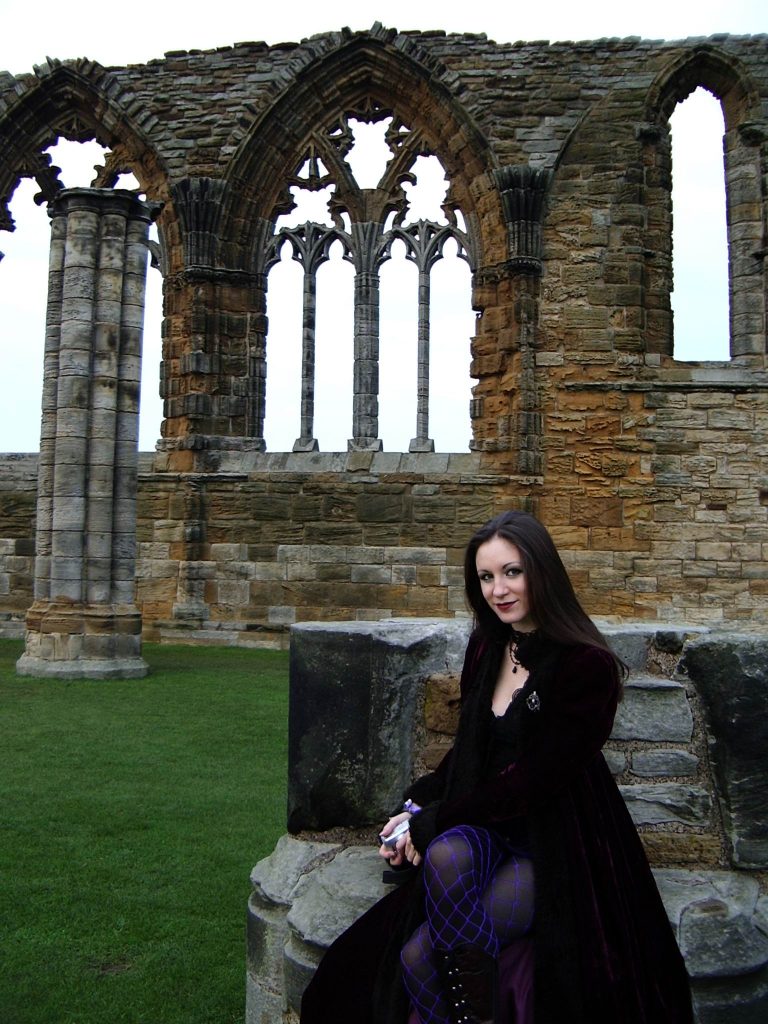
Me as a “baby Goth” at the Whitby Goth Weekend festival in 2004
I was hooked on the energy at the club. I remember dancing to Rammstein’s “Du Hast”, singing along at the tops of our voices along with everyone else in the room. This was my first time feeling connected like that and loving the passion and energy in everyone around me. We eventually wandered into the Goth room of the club and discovered this sub-world within a sub-world, and the rest is history!
But before this plunge into the alternative scene, I guess I’ve always been a little bit odd, and definitely loved creativity in clothing. From an early age, I developed my own sense of style, influenced by my Mum’s love of clothing. I remember at age 10, wearing a 60s style houndstooth pencil mini skirt and red cardigan with black faux fur trim to the youth club that I went to every Friday. Some of the girls laughed at my outfit as I wasn’t wearing jeans and a T-shirt or a pretty floral dress like the others. I didn’t get upset but instead argued back and defended my look- I knew my outfit was great and I decided I was going to do my own thing, and not just in my clothing, from then on!
So what do Goths do when they’re Gothing about?
Firstly, no one seriously says “Gothing about”, although maybe we should as it’s pretty cute! Secondly, This is largely the same as what any group of people with a specific interest do: we bond by discussing the latest album release from our favourite bands, share tips on the best eyeliner brands, attend music festivals like Infest (nicknamed “Goth Summer Camp”) with live bands and DJs performing, and support one another through life’s challenges.
We connect online but there is also a very active IRL social scene, with clubs, gigs, and festivals, at which we enjoy music, dancing, socialising, shopping, sharing a drink or too, and occasionally dressing up in dinosaur outfits in aid of charity (long story- see my Insta below!)
https://www.instagram.com/p/B18a-RllUGS/
But isn’t Goth about being sad?
In a word, no. Who would really go out to a club or concert if it was going to be sad and depressing?! Well maybe for an experience, but I’d suggest that this is not enough to sustain a global culture for almost 40 years. (Plus note the reference to dinosaur outfits above!).
there is support and understanding if you’re having a challenging time…
What Goth does allow for though, are lower energy states and acceptance that life’s not always full of joy and happiness. It can be a safe space to be if you’re feeling low– you’re not expected to be super up-beat dancing around like a hyper pop star if you’re not feeling that way. From my experience, there is support and understanding if you’re having a challenging time and no shame in being open and admitting you’re getting or in need of help.
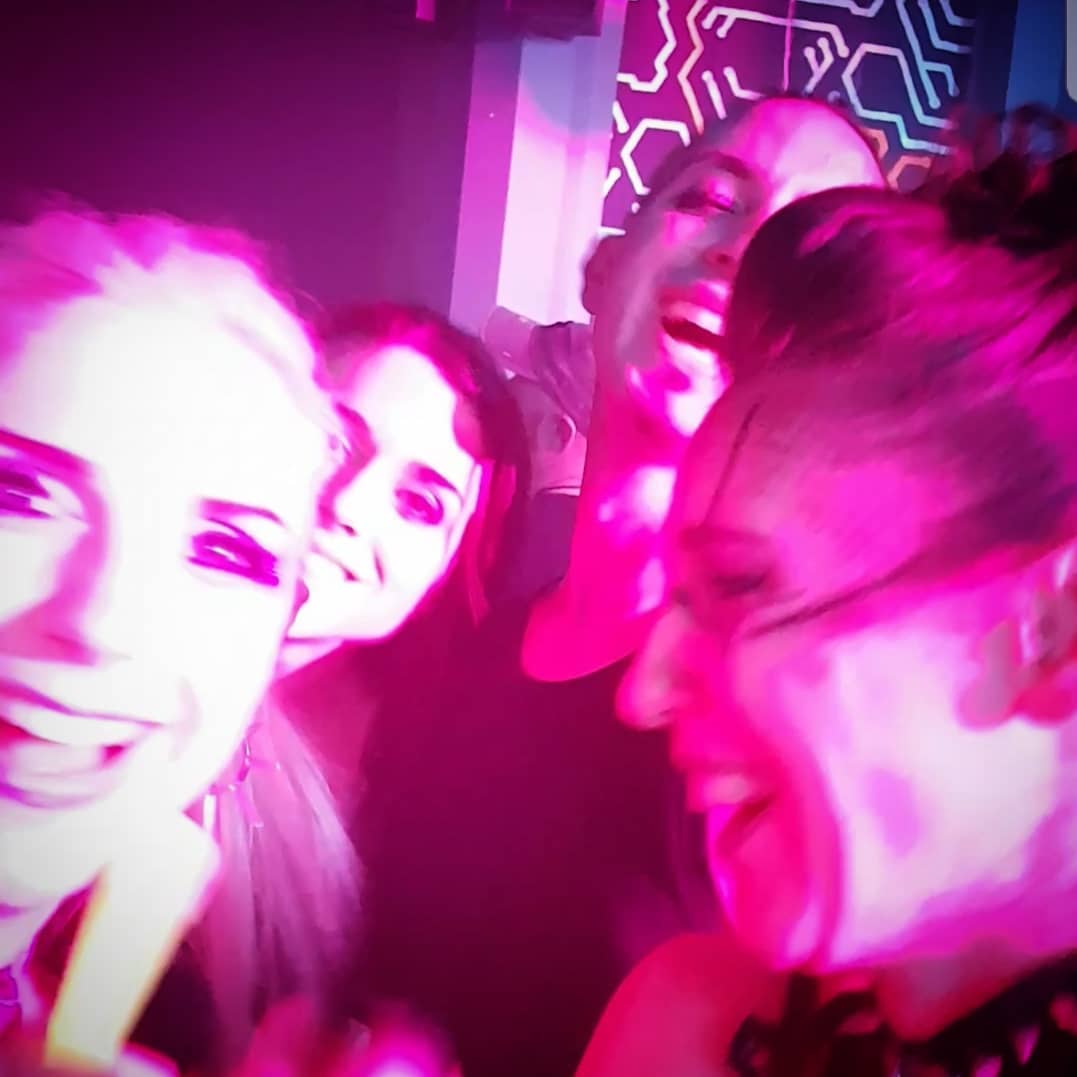
Look- smiling!!! #funwithgoths at Infest festival in 2018
Is there a belief system to Goth?
This is an excellent question and I can see where it comes from. We are a people with a strong visual identity and defined underground music taste, with events all over the world, so there must be something more to it than playing dress-up!
there is a respect for creativity of expression which ladders up to a welcoming of diversity…
Correct. I’d say there isn’t a defined “belief system” like you’d find in a religion for example, but instead a set of relatively consistent cultural values and acceptable behaviours that you may encounter in Goth scenes in different places. As I’ve touched on already, I’ve found that there is a respect for creativity of expression which ladders up to a welcoming of diversity- it’s not a scene for those only good at sports, the conventionally “beautiful”, or any other narrow entry criteria you may find elsewhere.
Gender and sexual identities don’t have to be binary and can reverse stereotypical expectations: those identifying as “male” have long hair and wear skirts and makeup and dance elegantly, while I, as a self-identifying “female”, wear chunky boots and dance pretty powerfully and non-sexually, as I have personally felt “expected” to in non-Goth clubbing space. I also love that many of my friends follow different lifestyles, such as relationship and sexual preferences (like BDSM practices and a variety of relationship models e.g. polyamory), and are fully supported and embraced within the Goth community.
“while Punks were angry that we live in this sad world, Goths were sad that we live in this angry world” (Voltaire, 2004)
In terms of a mindset or mood, one of my favourite quotes is from Goth author, comedian and musician, Voltaire: “while Punks were angry that we live in this sad world, Goths were sad that we live in this angry world” (What is Goth?, 2004). While the imagery of Goths can appear to be aggressive or scary, the mindset is a gentle and even genteel one. It’s cool to be smart or a “nerd” in this scene. Another one of the many reasons why I love it here!
That’s it for now, but I’ve only just scratched the surface! I’m sure these answers will have raised a lot more questions and I have a part 2 sketched out, but I’d like to hear from you lovely readers- do you have any questions about Goth culture you’d like to ask? I’d love to attempt to address these or share other resources to help out, so get in touch on social media, via message on here, or comment below 🙂
Thanks for reading 